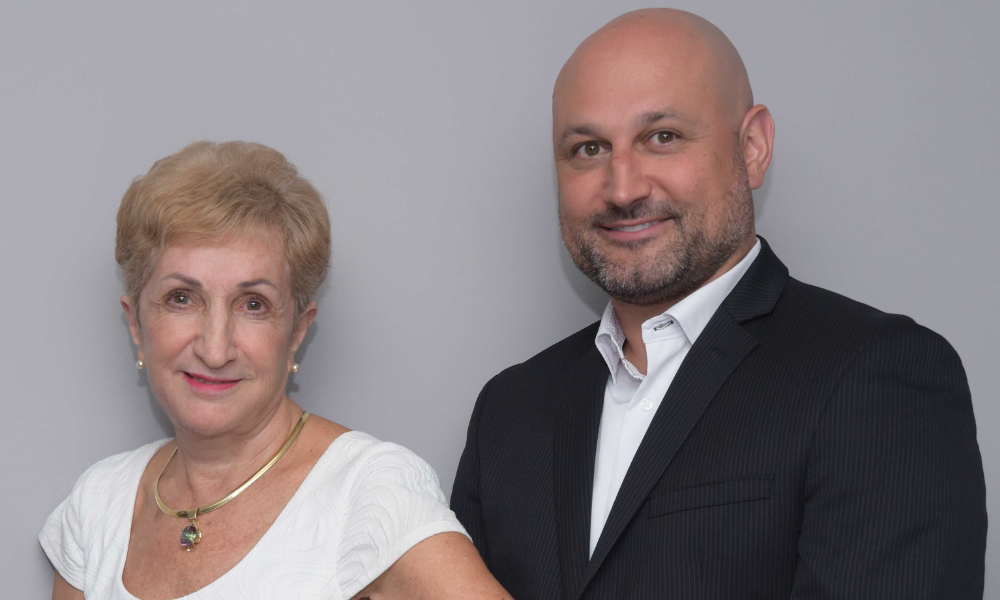Advisors share the advantages of their long-term plan, highlight best practices for other advisors to follow

Michael Cornacchia and Carmela Harnum have a textbook example of a solid succession plan. Harnum is the senior portfolio manager and wealth advisor at 6 Point Wealth Management of iA Private Wealth. Cornacchia is a Portfolio Manager and Senior Wealth Advisor in the same practice. Fifteen years ago, with a decade of experience under his belt already, Cornacchia agreed to join Harnum’s practice, meet her clients, and gradually take over her book of business. With a wealth of time on their side, plus a strong family connection — Harnum is Cornacchia’s aunt — they have made one of the most challenging aspects of the advisory business seem easy.
Cornacchia and Harnum are now nearing the end of that transition and the two advisors shared insights into what has allowed them to be successful. They explained what other advisors may want to do to build their own succession plans and highlighted the importance of time and preparation in this process. They drew key parallels between the work advisors do as planners for their own clients and the work they must do in succession planning, whether they are buying or selling a book of business.
“You’ve got to start early,” Cornacchia says. “As advisors we build financial plans for our clients, but we don’t say ‘come to us a year before retirement’ we say ‘come to us 10, 15, 20, or 30 years in advance. I think advisors need to replicate that when it comes to their business.”
“We do estate planning for our clients, we should be doing estate planning for our businesses,” Harnum adds.
While Cornacchia has a long-term agreement with Harnum, he has also purchased another book from a different advisor, with a one-year time horizon. That shorter turnaround time, he explains, took a significant amount of work upfront, but with appropriate support and enough time to build client relationships it was successful. He and Harnum agree that shorter timeframes than a year for succession become very challenging to manage. A more challenging transition may result in far lower client retention and satisfaction rates.
It also helps a great deal when the selling advisor is able to remain in some sort of consultancy role for a period of time, helping with the transition of their most complex clients to the new advisor. Harnum explained that even after she transitions some of her clients to Cornacchia’s care, she will attend client meetings for the next year or so to help manage more complex cases.
What’s key to any succession plan is alignment between the buyer and seller on the kind of practice they want to have. Advisors who share a philosophy around financial planning, service offerings, and investment management will have a far easier time transitioning from one side to the other. A big practice or high revenues may seem appealing, but it’s crucial to look under the hood and determine an advisor’s style and the age mix and asset mix of their clients.
Due diligence is a key aspect of any strong transition plan. In that process Harnum says that documentation is key. Handshake agreements and good conversations can lay the groundwork, but without strong documentation and full terms articulated in writing there is space for confusion, which can impact the success of any succession.
“I think putting the deal on paper and having both parties sign it solidifies the agreement and protects against a misunderstanding later,” Harnum says. “That should include terms, conditions, the amount paid, how it will be paid, and when it will be paid. Documenting and signing provides clarity.”
Harnum and Cornacchia both praised the support that their firm gave them in this transition. Because of their success they both speak with other advisors about succession plans too. In situations where a clear successor is not as obvious, they say that regional VPs at the firm level can play a key role facilitating introductions between buying and selling advisors. They noted that iA Private Wealth also offers financing for buying advisors, allowing them to more easily purchase a book of business at a time of their lives when they likely also have a new mortgage and a high level of overall debt.
The broader industry transition towards advisory teams can also help facilitate stronger succession plans. As more advisors enter into team arrangements, they can better share the costs of purchasing a book and share the additional load of client management.
Whatever approach advisors may take, however, both Cornacchia and Harnum say that in working towards a successful succession plan, there is no greater advantage than time.
“Start early and plan, plan, plan,” Cornacchia says. “Just like you would do for your clients, you want to do that for yourself and your business because ultimately the more time you have the greater probability of your success.”



